Some intriguing questions...
(1) How do magnetic structures on the sun rearrange themselves and as a consequence generate superhot plasma? A process known as magnetic reconnection allows tangled magnetic fields to relax and straighten. Magnetic energy is converted into heat and flow. Electric fields from the changing magnetic fields accelerate charged particles. Components of the Maxwell stress tensor are converted to components of the pressure tensor or Reynolds stress. An outstanding question is why are the ions preferentially heated? Hot ions indicate a process other than Ohmic heating (perhaps an energetic beam of ions thermalized by some process).
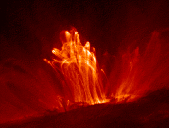
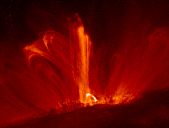
Here are two subsequent images from the TRACE satellite showing tangled fields on the left evolving to straighter fields on the right (post-flare loop is visible below). Energy is released in the process, transferred from the electromagnetic fields to the fluid plasma.
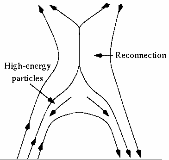
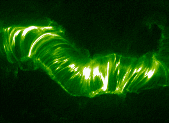

A schematic showing the structure of the field lines in a "two-ribbon" flare is shown at left (post-flare loop is what remains below). The famous Bastille Day two-ribbon flare (7/15/00) is shown in the middle (view from above, 3e8 meter scale, one light second, 25 earth diameters). The proposed relaxed structure is shown at right.
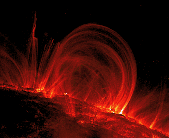
This is a side view of a large, stable loop structure with nearly straight (potential) fields. More images are here.
(2) How do astrophysical disk structures shed angular momentum and as consequence generate extended magnetized jets at a wide variety of scales? The magneto-rotational instability (MRI) is postulated as the mechanism by which mechanical angular momentum is transfered to the magnetic fields. Here, components of the Reynolds stress are transferred to components of the Maxwell stress.
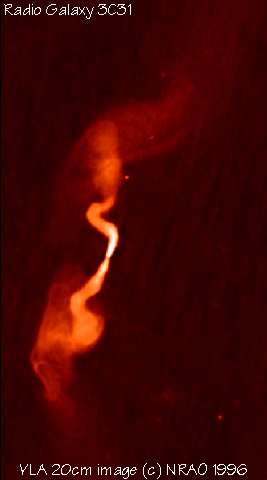
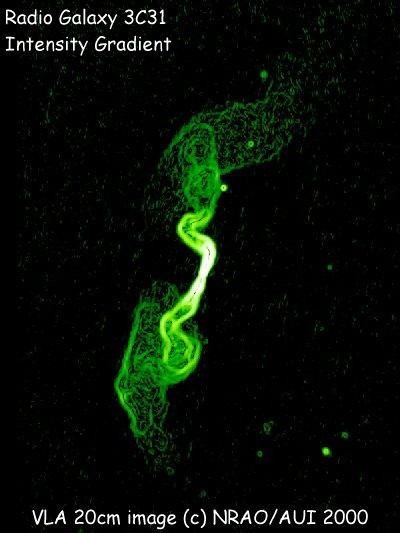
Here are some jets with scales approaching 1 Mpc from end to end (10^{22} meters)...
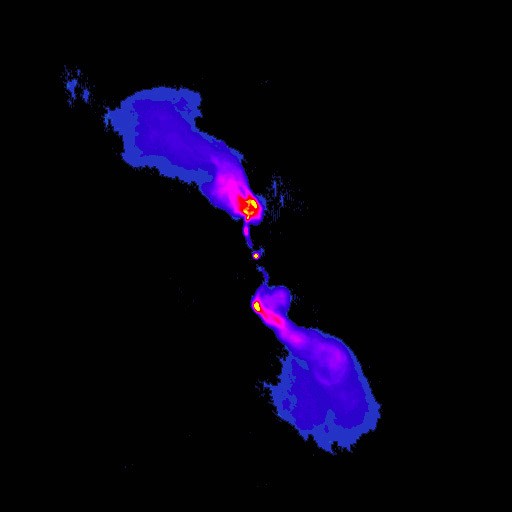
The scale of the Hydra A cluster (3C218) above is a few hundred kiloparsecs. The core is likely to have a 10^8 solar mass black hole (gravitational energy of 10^{61} ergs). Magnetic fields in the lobes average 30 microgauss so the stored magnetic energy is 10^{60} ergs. See Colgate, et al, Physics of Plasmas 8, 2425 (2001).
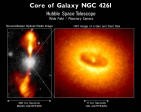
The scale of NGC4261 above is a few hundred light years (bar at bottom/right is 400 ltyr, supermassive black hole at the core)...

This image of our galactic center has a scale of a few hundred light years (the bar at bottom/left is 240 ltyr). A 10^6 solar mass black hole (SgrA) is at the core. Very small scale plumes (10 light years) are also visible.
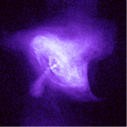
The scale of the core of the Crab nebula above is a few light years (10^16 meters, pulsar/neutron star at the core)...

The scale of Herbig-Haro jets is about the size of our solar system (much less than 1 light year... conventional star at the core)... Note that in each case, a central disk is threaded by bipolar jets.
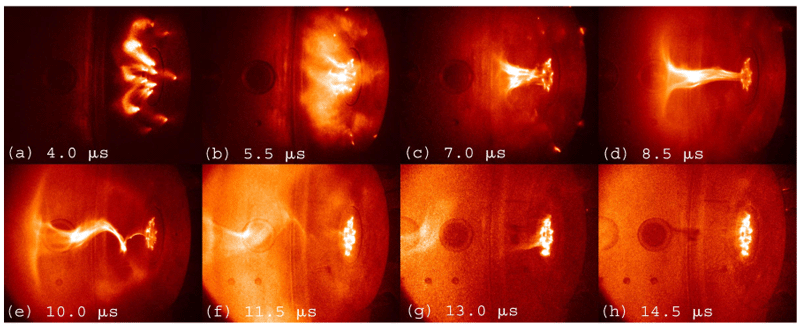
The scale of magnetized laboratory jets is about 0.1 m (a few atto-parsecs). See Hsu and Bellan, PRL 90, 2003. Note the similarity to 3C31 above.
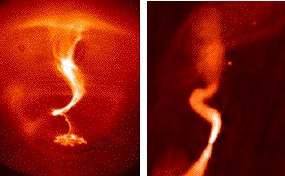
The laboratory jet on the left is about 1 foot long. The astrophysical jet on the right is about 1 million light years long.

A cartoon model for these large scale jets appears above. A question is what prevents the jet from kinking if it gets to be longer than its diameter? Perhaps sheared flows smooth out the kinks as in the ZAP experiment.
(3) How do astrophysical objects like the sun, most stars, and other astrophysical objects generate large scale magnetic fields out of small scale magnetohydrodynamic (MHD) turbulence? The dynamo is the general process by which seed magnetic fields are amplified by the motion of conducting fluid. Here, components of the Reynolds stress are transferred to components of the Maxwell stress.
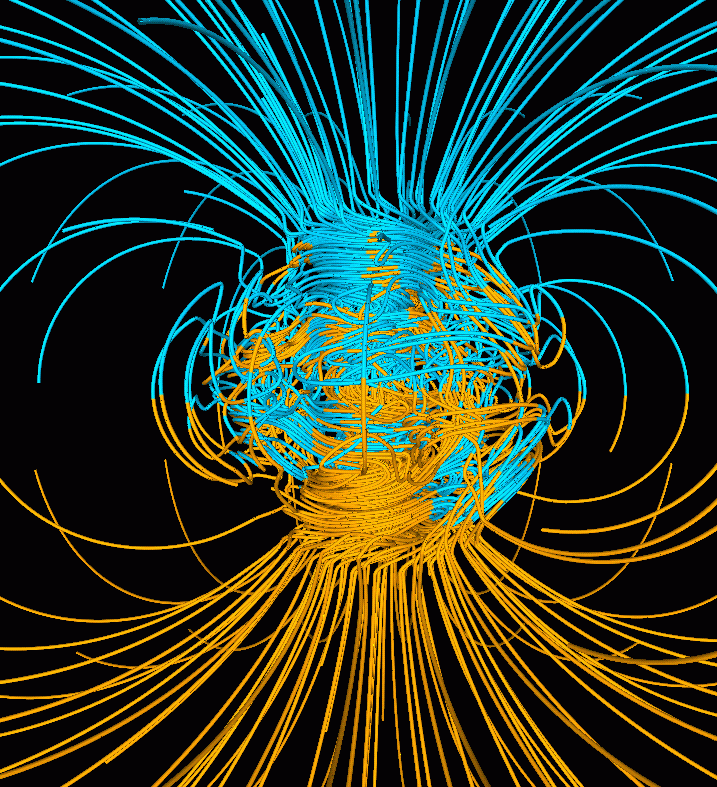
Above is the result of a simulation of the earth's geodynamo by G. Glatzmaier (see Nature 377, 1995). Geodynamo simulations are the state of the art in MHD calculations. Calculations of the solar or galactic dynamo are a long way off.
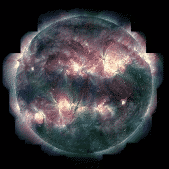
Above is the full disk of the sun showing magnetic activity (anchored by sunspots) localized to bands at latitudes just above and just below the equator.

This is a plot showing the distribution of sunspots as a function of time. This so-called butterfly diagram shows that sunspots emerge at high latitudes and propage towards the solar equator. This process repeats itself every 11 years.
(4) How do certain laboratory magnetofluids organize themselves into large scale structures? One hypothesis (due to Taylor), is that the system minimizes its magnetic energy subject to the constraint that its magnetic helicity is fixed. Another hypothesis involves maximizing the system entropy subject to constrained dynamics.
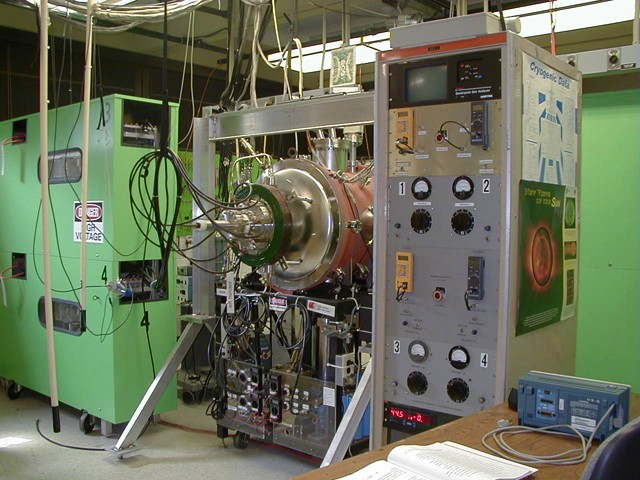
Above is a photo of the SSX laboratory at Swarthmore College. Inside the chamber, we merge two magnetized plasma rings called spheromaks (1 meter scale) and measure self-organized magnetic structure, plasma heating (up to 1 million degrees), and energetic ions.

We are able to measure the dynamics of the magnetic fields in SSX with an array of 600 magnetic probes. Above is a snapshot of the fields in two magnetic loops at the moment of merging. Notice the similarity to the solar flare images above.
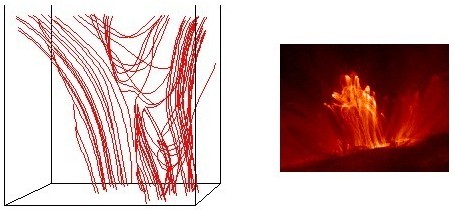
Here is a comparison image of SSX magnetic fields (left, 1 foot tall) and solar magnetic fields (right, 5 earth diameters tall).
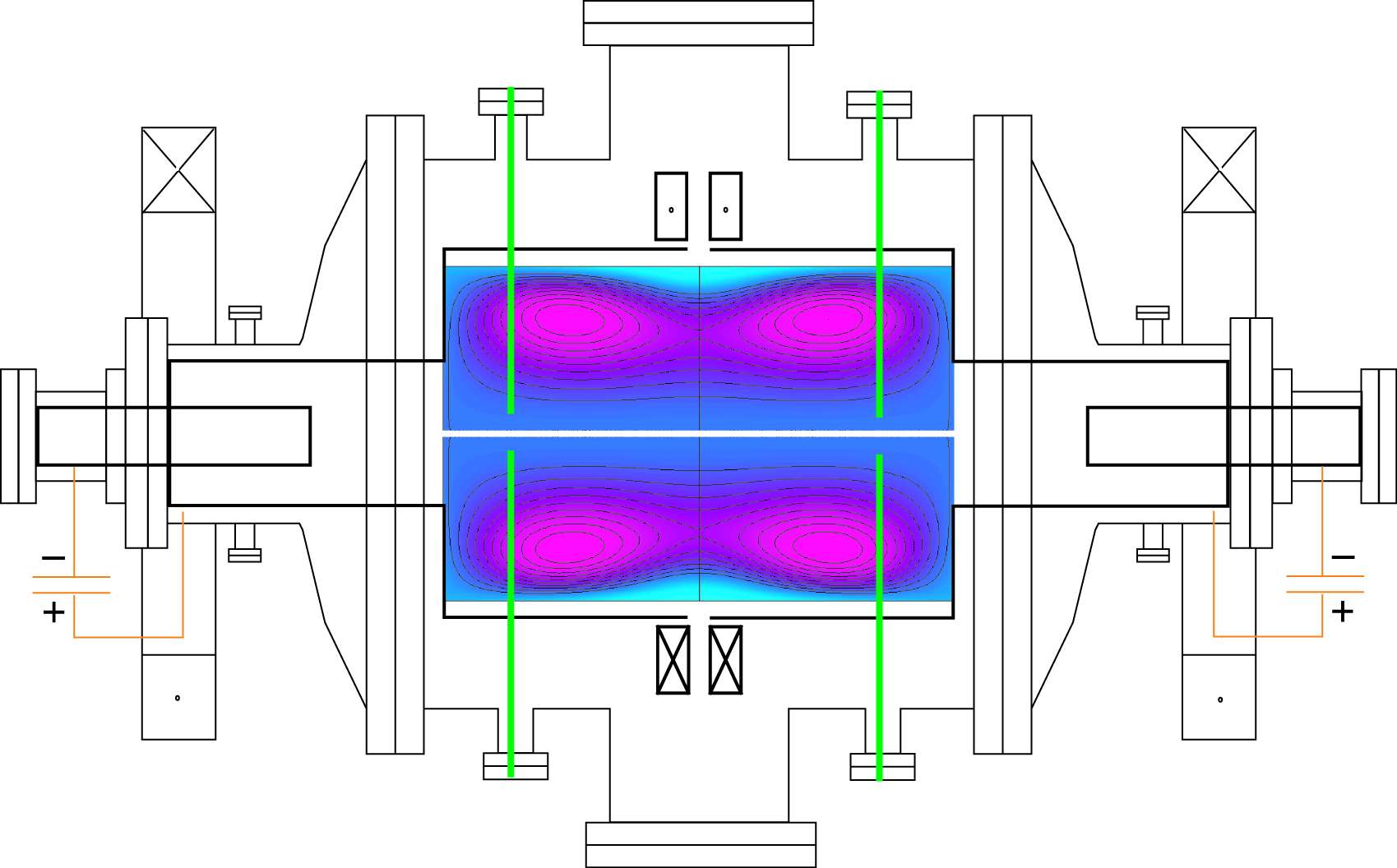
The self organized structure of two merged spheromaks is an object we call a doublet CT. A simulated image appears above.

Above is magnetic data from our self organized doublet CT object.

Above is a simulation of the merging of two spheromaks into one.
(5) Self organization and emergence: There are at least two paradigms for the formation of large scale structure out of turbulence. The first, more intuitive, dynamical, explanation is called selective decay. The idea is that dissipation acts more strongly on smaller scale structures so that as the smallest and next larger structures decay, a final large scale structure "emerges" out of the turbulence. The problem is that this isn't what observed. This selective decay process should take a long time to unfold but generally, large scale structures emerge in a few characteristic times of the flow. Hurricanes form after one cycle. The second paradigm is less intuitive and is based on maximal entropy. The idea here is that in some systems with constrained dynamics, the state of maximal thermodynamic entropy exhibits large scale order. A two dimensional, two state spin system at low energy will snap into an ordered state with maximal entropy.

A related issue is the persistence of organized structures in turbulent systems far from equilibrium. A canonical example is Jupiter's Great Red Spot. How is it that this structure has persisted for at least 300 years in a sea of intense turbulent flow on Jupiter's surface? See J. Miller, et al, Phys. Rev. A45, 2328 (1992) and M.C. Cross and P.C. Hohenberg, Rev. Mod. Phys. 65, 851 (1993) here.
(6) Connection to fusion: Are there self-organized magnetic structures that would be suitable "bottles" for a fusion reactor? Spheromaks and reversed field pinches undergo a relaxation process to a self-organized state. Are there other such states with even better characteristics for fusion? Wouldn't it be interesting to discover the MHD/fusion analog of the Great Red Spot?
Here is a link to the NRAO image gallery.
Here is a link to the NSF Center for Magnetic Self Organization in Laboratory and Astrophysical Plasmas.
Topical areasDynamo Reconnection Angular momentum transport Ion heating and acceleration Magnetic helicity Magnetic chaos
Possible future plansOverlay SSX data with Polar data Simulations |
LinksNRL plasma formulary (PDF) (HTML) Encyclopedia of Astronomy and Astrophysics
basic astronomical resources
|